Spring, such as it is, in California.
Our last visit was in December 2006, and our first visit was in June. I was just a wee garden blogger then. Too funny to read the olde blogge postes.
For one thing, I know how to spell Beschorneria now.
But I'm still not sure how to distinguish certain Beschorneria from Agave attenuata.
Sigh...still just a sapling of a gardener; still so much to learn...
Let's start today at the oasis. This is pretty much it for water in this exceedingly dry garden. (There are sprinklers and hoses here and there but I can't imagine what they're used for.)

Bancroft collected and planted several kinds of Eucalyptus long before that genus became synonymous with evil in California. It's hard to watch them intrude into California's oak woodlands and coast ranges, but easy to enjoy their features in dry gardens and urban parks like this one. In this picture I like how the exfoliating bark relates to the floppy aloes and agaves. The pointy yuccas on the right add some visual balance.
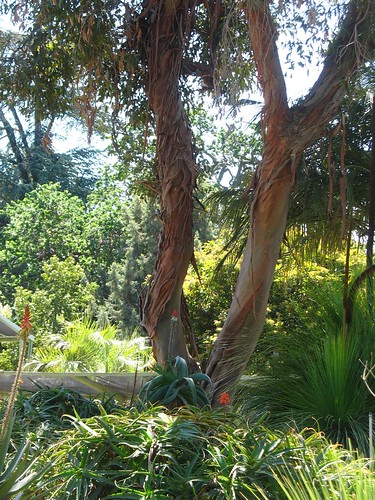
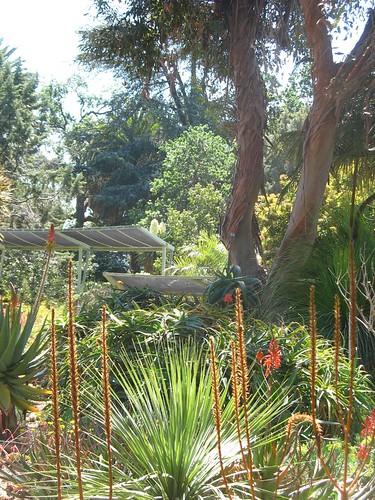
Several tall trees serve as strong design elements and focal points.

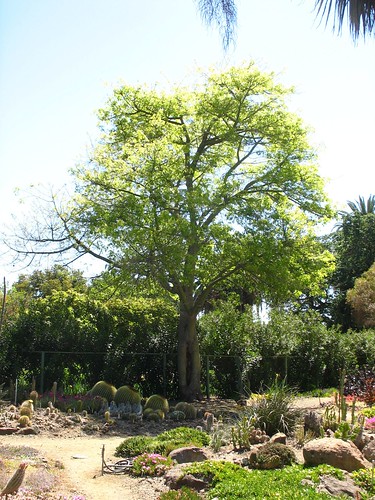
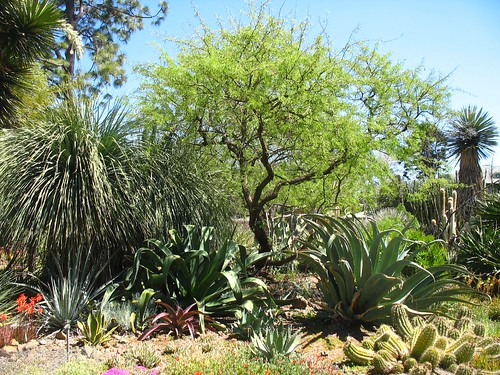
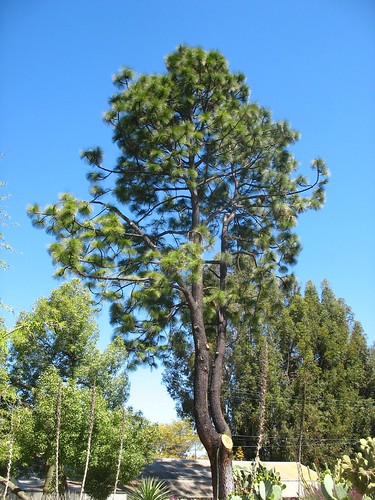
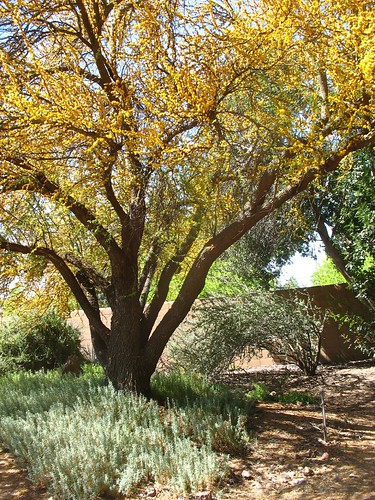
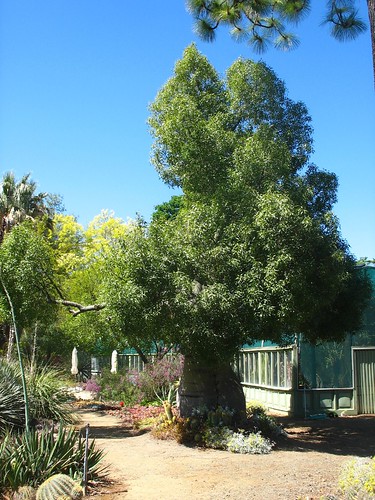
That's a Brachychiton above; lots of little things are planted in the soil mounded on the crown. You wouldn't want to mound soil on the crown of most trees, but I guess you can with this one.
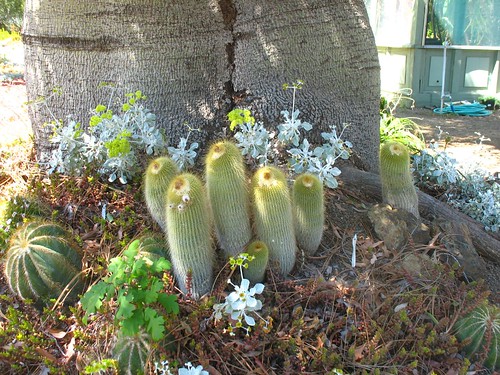
The noblest tree in the garden must be what I presume is a valley oak, Quercus lobata; noble because it's the only tree that provides deep shade in the garden's hot, dry, desert-like environment.
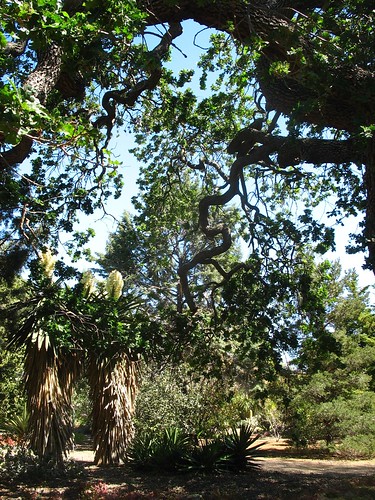
It has some remarkable branching.
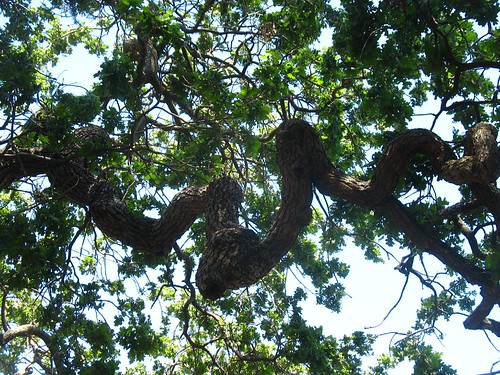
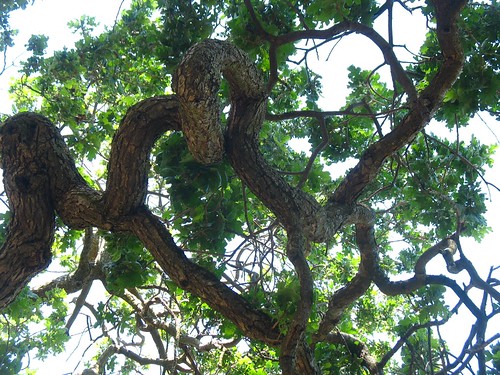
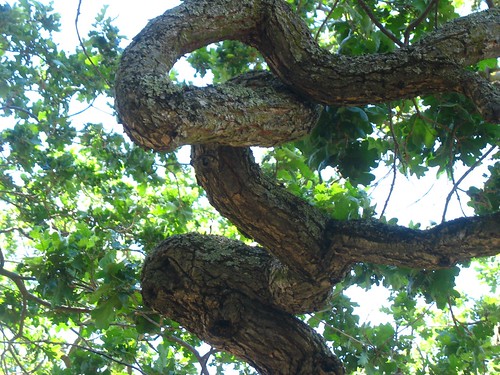
Well-sited oaks grow fast. Plant one now and enjoy it when you're old.
Underneath it, a water-loving annual Claytonia has died for the year. I thought it curious that it turned red, and Emma said, "Yeah, I've seen that."

Everyone plants agaves in full sun, but they can be striking in part-shade.
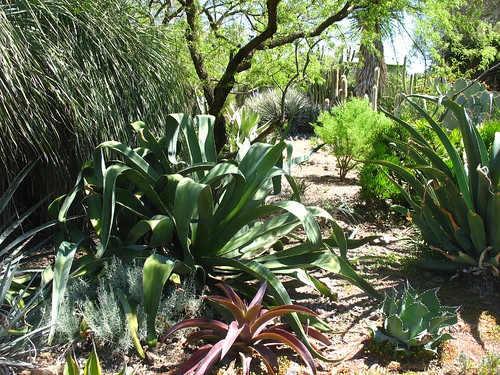
All these years of planting agaves in our gardens, and yet the variegated forms remain rare.
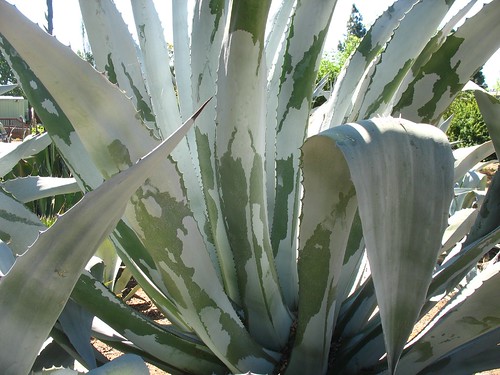
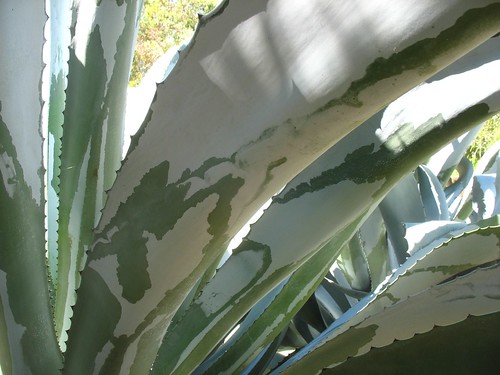
This one's inflorescence seems uncommonly massive to me.
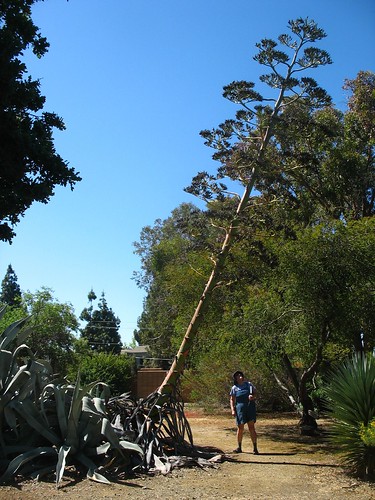
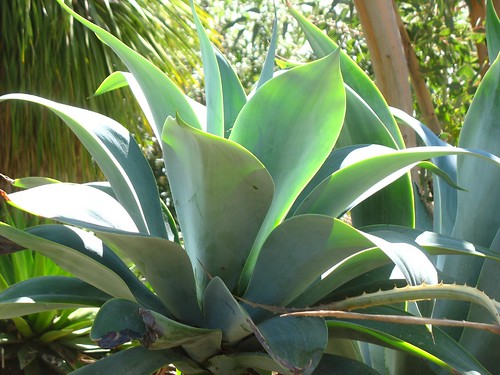
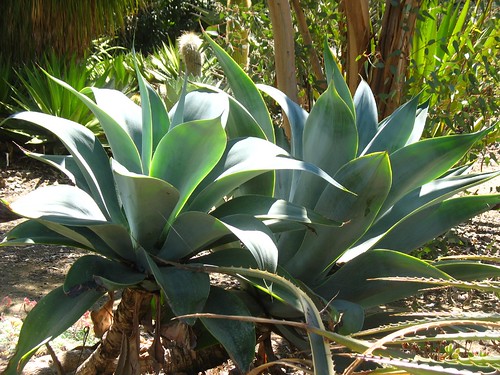
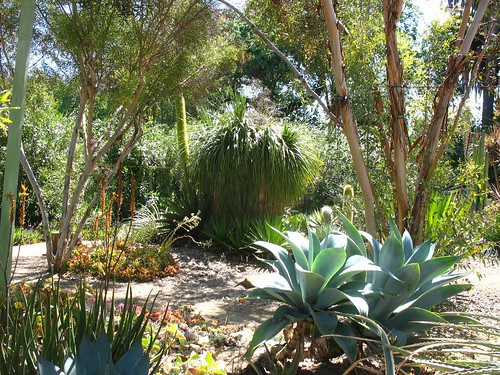
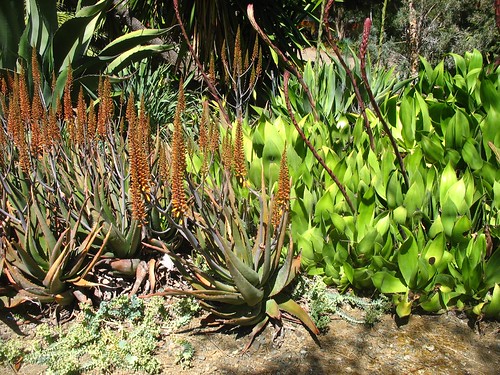
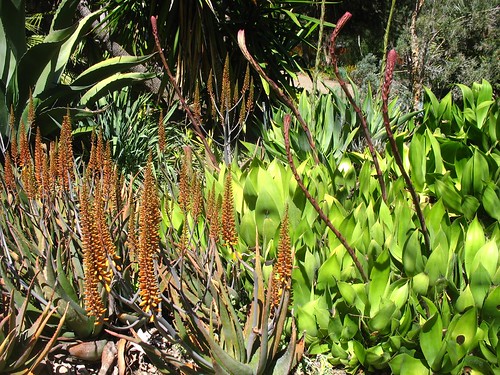
There are some color palettes and forms you can only obtain with desert plants.
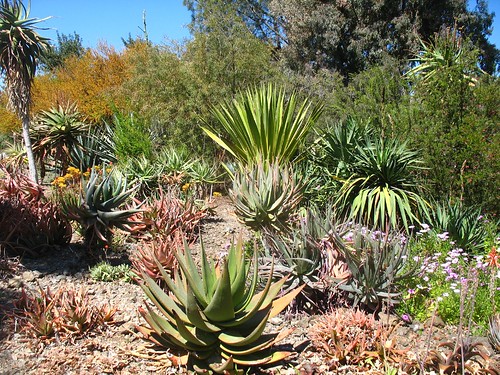
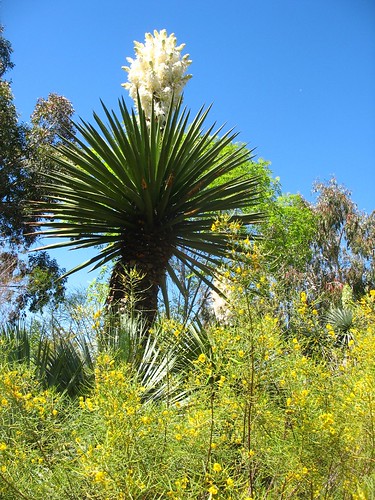
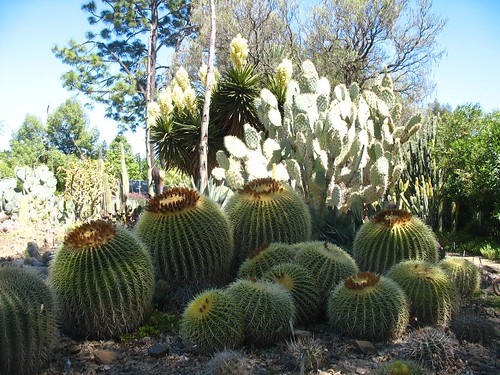
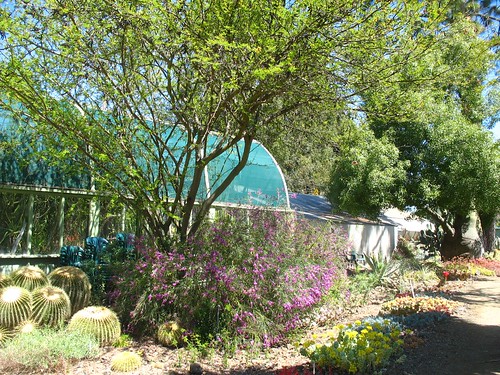
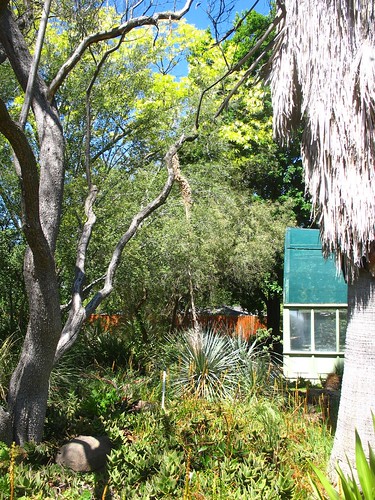
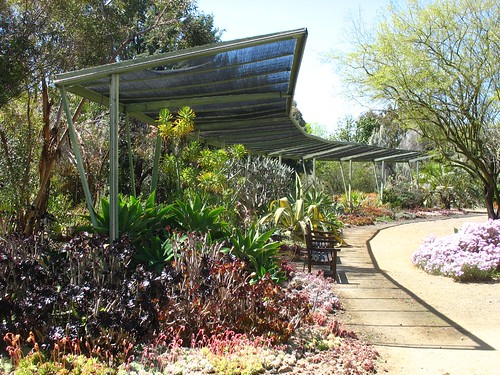
This combination was a pleasant surprise.
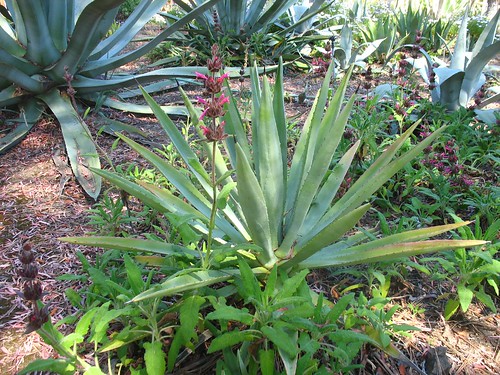
But it makes sense. Salvia spathacea seems to do best in dry shade. In my garden it needs water in sun or it gets powdery mildew.
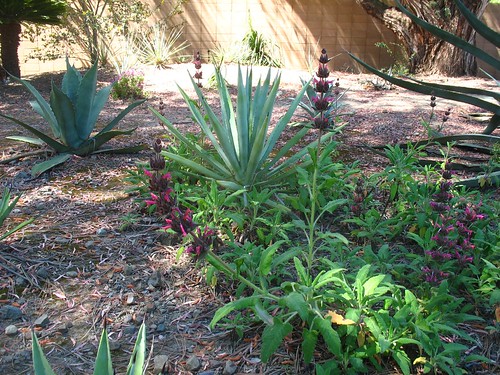
I approve of the Osteospermum too, but this is where the Romneya coulteri was in previous visits. I hope it's coming back.
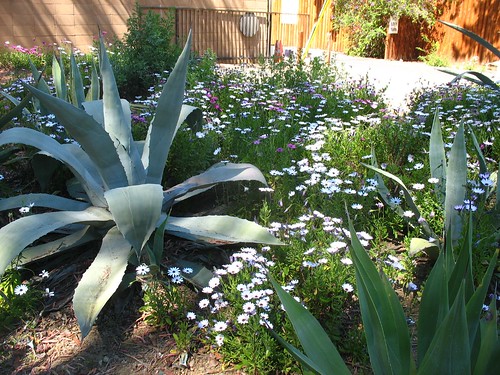
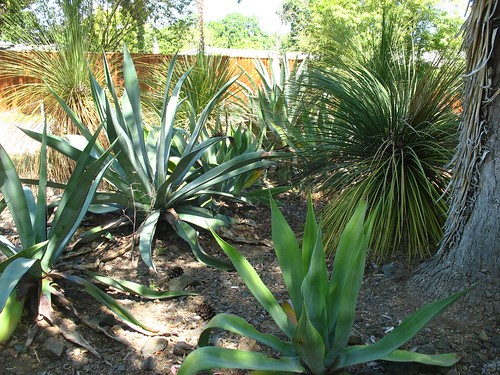
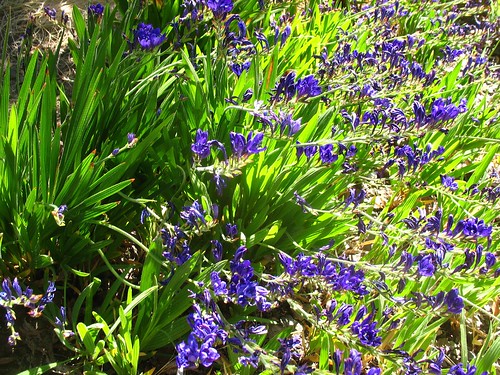


4 comments:
Thank you for pointing out to me that I have been misspelling Beschorneria for two weeks now ... as I've been documenting mine blooming it's freakish head off.
The way I tell the difference between Beschorneria and Agave attenuata is the quality of the leaves. I find the Agave more rigid and sculptural, while the Beschorneria has more linear and flexible leaves.
What awesome pics, by the way!
Which Beschorneria looks like A. attenuata?
And I beg to differ about variegated Agaves: var. marginata is on my shortlist of most overused plants in NorCal. That one you photographed is excellent though.
You're so right... there are some color combinations that can only successfully be done with desert plants.
The rest of us can only drool. :)
You really have the best of all climates in California, Chuck...lucky! I really love the look of the desert plants, but I think I get too much rain. Great pictures as always, and I just love the funky branches on that oak. I bet it would be a good bonsai specimen....hmm.
Post a Comment